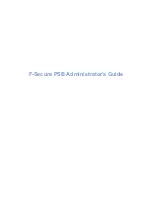
7
Selecting MONO mode leaves the Aux send under individual control. Each Aux send is controlled
individually, and as there is no stereo image, there is no need for a pan control. This was the extent of
aux send functionality in version 1.0.
STEREO mode links two adjacent aux sends together, in the same manner that tracks are stereo linked
(1/2, 3/4, and 5/6). A pan control is provided to control the gain balance between the linked auxes.
You ll notice in the shot below that the level control for Aux send 2 has been replaced by the pan slider.
USP Mode (Use Stereo Pan) removes both the level control for Aux 2, and the pan control available in
STEREO mode. Instead, it uses the actual pan controls on the mixer channels themselves to determine
the balance of Aux 1 and Aux 2.
COPY TO ALL CHANNELS does just what it sounds like it might —
it copies the aux send mode (for
the pair of Aux sends in question) to all of the other channels on the mixer. Some mixing engineers
like to keep the behavior of the Aux sends the same for all the channels in a mixer, as it makes
navigating around a complex mix much easier (one less thing to remember).
4.
The default signal order has been changed to Dyn-EQ, to better reflect real world use
It is more common to apply dynamics to a signal before equalization, as doing it the other way around
has a greater effect on the tonal characteristics of the source material. In general, compression
reinforces the most prominent frequency contained in a signal —
which is why a vocal sound that is
already essy can get unbearably so when heavily compressed. Applying equalization
before
dynamics changes which frequencies are compressed more than others —
which means that the EQ will
continue to change as the compression threshold changes. Compressing first and adding EQ later is
generally easier to control.
Incidentally, this exemplifies how any device that acts on the source material with any type of
threshold can have its behavior changed by EQ content. This phenomenon also explains why a guitar









































